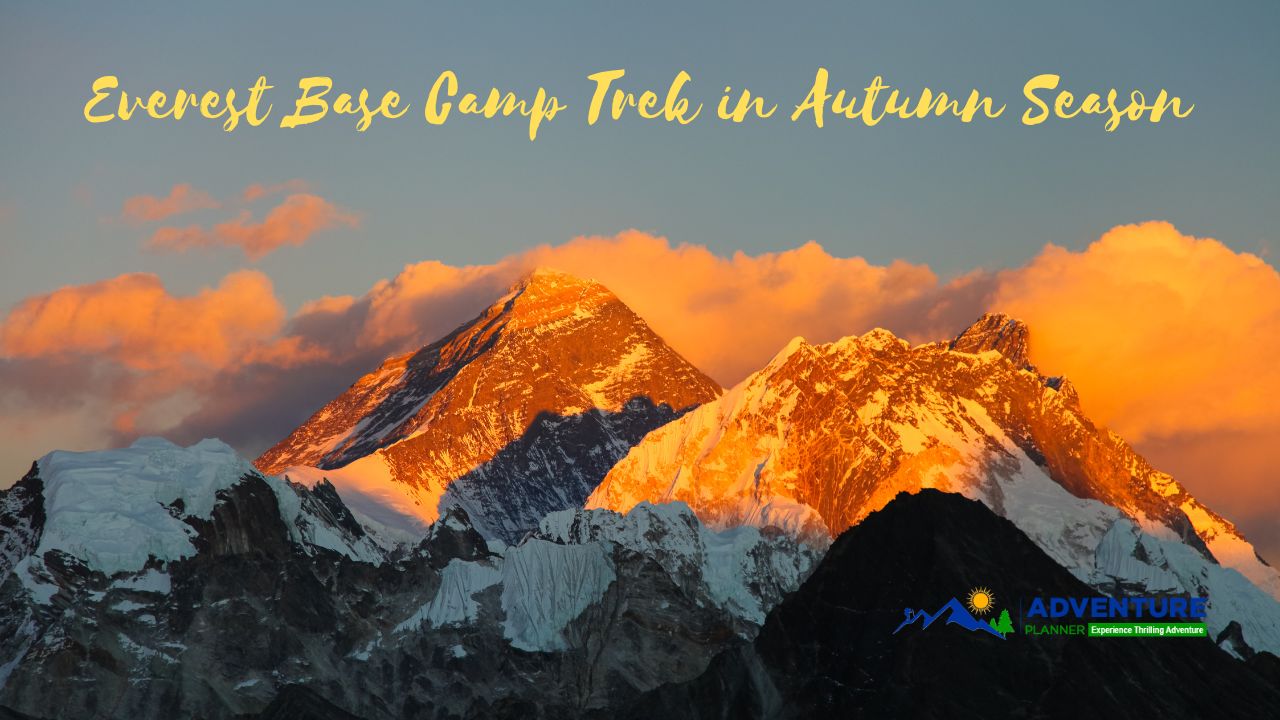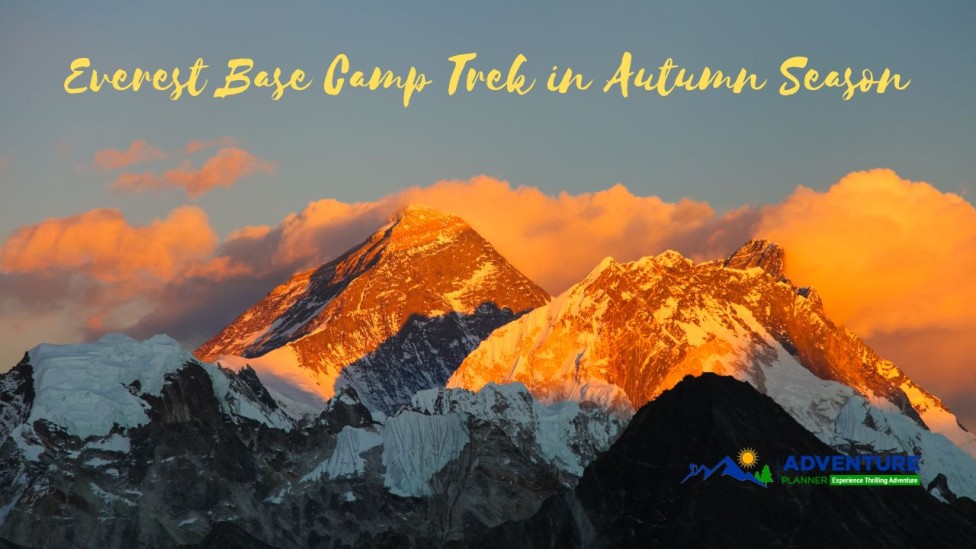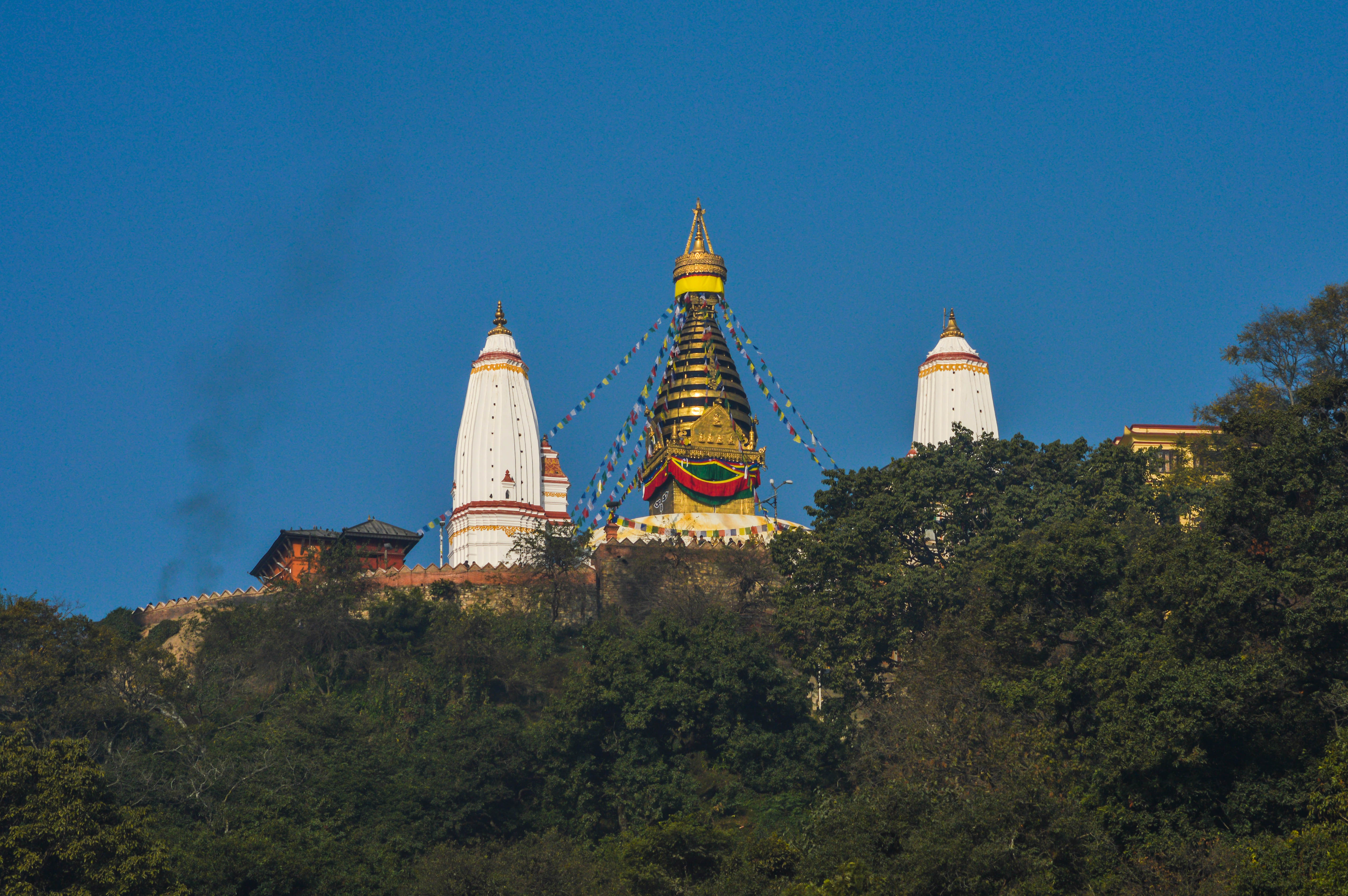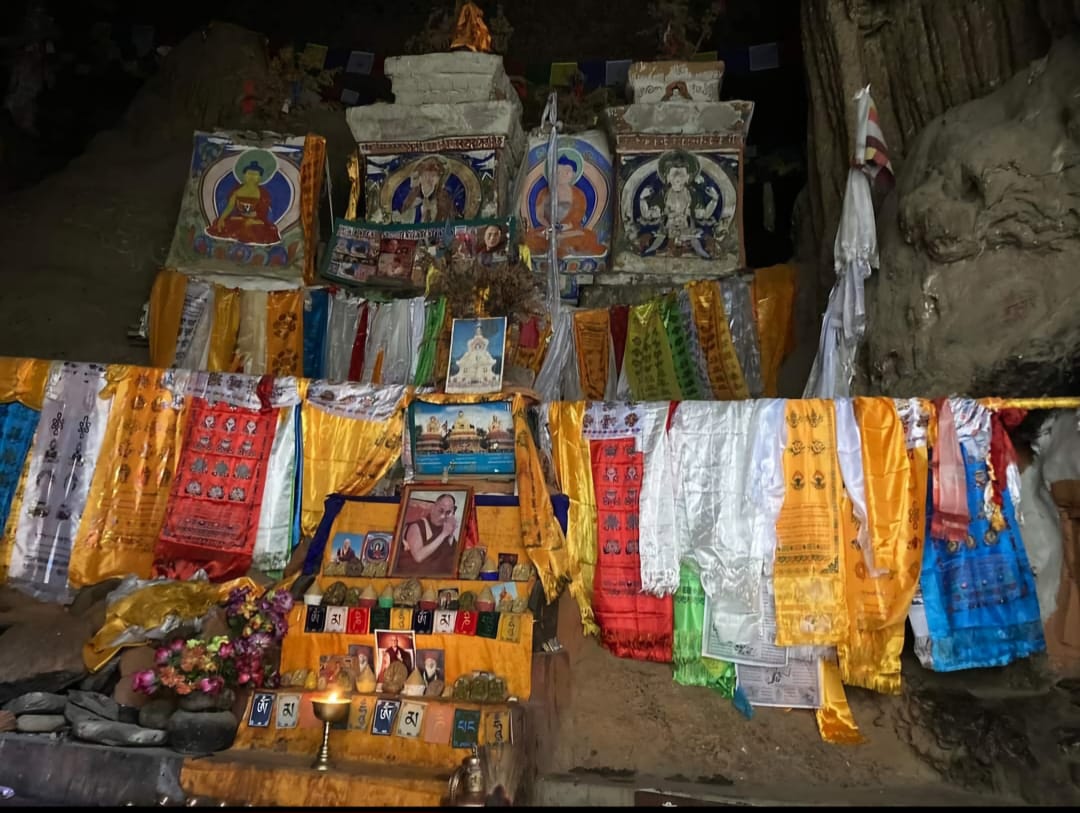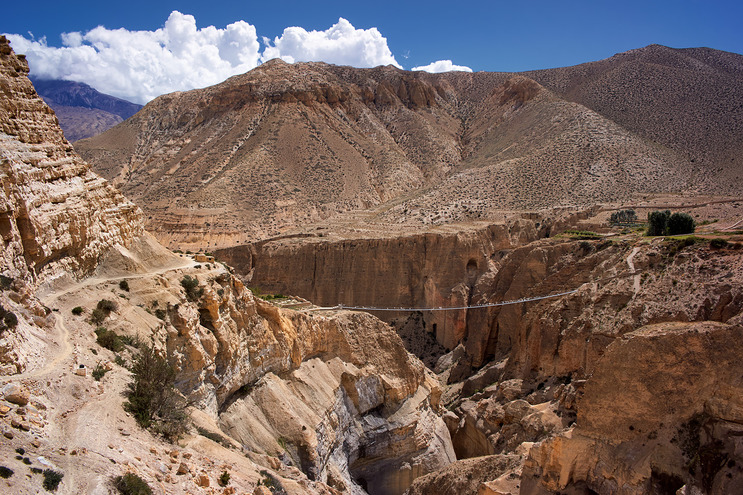The Everest Base Camp Trek in the autumn season (September to November) is one of the most popular times to trek to Everest Base Camp, and for good reason! The weather is generally stable, the skies are clear, and the temperatures are mild compared to the cold winter months.
Everest Base Camp Trek in Autumn Season
The Everest Base Camp Trek during the autumn (September to November) has several advantages. Here are the key points of Everest Base Camp Trek in the Autumn Season.
1. Perfect Weather Conditions
- Clear skies and sunshine: Autumn offers the clearest skies, providing stunning panoramic views of Everest and surrounding peaks. The crisp air and bright blue skies are a highlight for trekkers.
- Milder temperatures: The temperatures in autumn are relatively moderate compared to the winter chill, making trekking more comfortable. Daytime temperatures at lower altitudes are pleasant, and although it gets colder at higher elevations, it’s not as extreme as during winter.
- Stable weather: With the monsoon season over, there's little to no rain, which means the trekking trails are dry and less muddy, reducing the risk of slippery paths.
2. Excellent Visibility and Views
- Breathtaking views of Everest and the Himalayas: Autumn offers some of the best visibility of Everest, Lhotse, Makalu, and other stunning peaks. The clear skies mean you can capture photos of the mountain landscapes in full glory.
- Vibrant surroundings: The landscape is lush and green from the monsoon season, and the rhododendron forests are still vibrant, providing beautiful scenery throughout the trek.
3. Optimal Acclimatization Conditions
- Gradual ascent: The mild temperatures and stable weather create a comfortable environment for proper acclimatization. It’s essential for minimizing the risk of altitude sickness, and autumn’s weather allows for a steady pace with fewer weather-related complications.
- Healthier trekking conditions: The dry air means fewer chances of catching a cold or dealing with respiratory issues, which can sometimes occur with the humidity and rain during the monsoon season.
4. Ideal for Solo Trekkers and Groups
- Well-established teahouses: The trekking infrastructure (tea houses, lodges, etc.) is in full swing, so it’s a good time for both solo trekkers and groups. Many trekkers head to the region in autumn, but it's still not as crowded as in the peak summer months.
- Social atmosphere: You'll meet a mix of people from different parts of the world, but the trails are still manageable, meaning you won’t feel overwhelmed by large crowds.
5. Fewer Risks of Natural Disasters
- Minimal risk of landslides: Because autumn follows the monsoon season, there is less risk of landslides or trail blockages caused by heavy rains. The trails are more stable, allowing for a safer trekking experience.
6. More Comfortable Teahouses
- Well-equipped lodges: Tea houses in the autumn are well-prepared to handle the influx of trekkers. You'll find cozy accommodations, hot meals, and often better service because the season is not as harsh as winter, and the staff is more readily available.
7. Good Access to Medical Support
- Availability of medical resources: The high-altitude medical centers are open and operating at full capacity in autumn. If anything goes wrong or if you need medical attention, there are facilities available that are more accessible than during winter months.
8. Great for Photography
- Golden hour light: The clearer skies and stable weather conditions make autumn the ideal season for photographers. The morning and evening light during sunrise and sunset illuminate the mountains beautifully, creating incredible photo opportunities.
9. Overall Trekking Comfort
- Dry trails and dry equipment: The dry conditions and clear skies make it easier to keep your gear dry, which is crucial for maintaining comfort during the trek, especially at higher altitudes where the weather can change rapidly.
Autumn is widely considered the best season for the Everest Base Camp trek due to these advantages. The balance of excellent weather, stable conditions, and ideal trekking environment makes it a great time to experience the majesty of the Everest region. It’s definitely a time to consider if you’re planning your trek!
Weather Conditions of Everest During Autumn Season
During the autumn season (September to November), the weather conditions around Everest are generally very favorable for trekking. Here’s a breakdown of what to expect in terms of temperature, precipitation, and overall conditions:
1. Temperature
Lower altitudes (2,800m – 3,500m / 9,186ft – 11,483ft):
- During the day, temperatures typically range from 10°C to 15°C (50°F to 59°F), which is comfortable for trekking.
- Nights can get cooler, dropping to around 0°C to -5°C (32°F to 23°F), but it’s usually not as cold as winter.
Mid-altitudes (3,500m – 4,500m / 11,483ft – 14,764ft):
- Daytime temperatures are usually 5°C to 10°C (41°F to 50°F), which is still pleasant for trekking.
- Nighttime temperatures can fall to -5°C to -10°C (23°F to 14°F), particularly at higher teahouse locations.
High altitudes (4,500m – 5,500m / 14,764ft – 18,044ft):
- During the day, temperatures range from -5°C to 5°C (23°F to 41°F), which can feel quite cold, but it’s still manageable.
- Nighttime temperatures often drop to -10°C to -15°C (14°F to 5°F), which can be harsh, especially as you get closer to Everest Base Camp.
Above 5,500m (18,044ft):
- Daytime temperatures can hover around -10°C to -5°C (14°F to 23°F) in the early mornings and late afternoons.
- At night, temperatures can plunge to -15°C to -20°C (5°F to -4°F), or even lower depending on the specific location and elevation.
2. Precipitation
- Low chances of rain: Autumn marks the end of the monsoon season, so the chances of rain are very low. This makes it one of the best times to trek in terms of dry conditions on the trails.
- September: There’s still a small chance of residual rain, but it’s far less frequent than during the monsoon months.
- October and November: Precipitation is rare, with mostly clear skies and dry conditions, making these months the prime time for trekking.
- Snow in higher altitudes: While snowfall is rare at lower altitudes during autumn, it can occur at higher elevations, especially above 4,500m (14,764ft). You might encounter some early snowstorms as you approach Everest Base Camp or climb to Kala Patthar, but these tend to be short-lived and manageable in early autumn.
3. Wind
- Moderate winds: Winds are usually not too severe in autumn, but they can still be noticeable, especially in the exposed areas at higher altitudes or on ridgelines. Winds are typically stronger in the late afternoon and evening, but they are not as harsh as during the winter months.
4. Clear Skies and Visibility
- Excellent visibility: One of the standout features of the autumn season is the incredible clarity of the skies. With minimal rain and clouds, the weather is typically clear, which provides exceptional views of the Himalayan peaks, including Mount Everest, Lhotse, and Makalu.
- Golden hour light: The crisp air and clear skies create beautiful light during sunrise and sunset, making this an ideal time for photography.
5. Weather Variability at High Altitudes
- While the lower altitudes have relatively stable weather during autumn, conditions can change quickly at higher altitudes. Even in autumn, you could face:
- Cold mornings and evenings at higher elevations, with temperatures below freezing.
- Snowstorms or sudden weather changes, especially in the months of November, when the winter season begins to approach.
Summary of Key Weather Factors in Autumn Season for Everest Trek
- Mild daytime temperatures (10°C to 15°C at lower altitudes).
- Cold nights, especially above 3,500m (0°C to -10°C).
- Low risk of rain (dry trails with clear skies).
- Potential early snow at higher altitudes, especially as you approach Base Camp or Kala Patthar.
- Excellent visibility of the Himalayas, with clear skies and stunning views.
- Shorter days as you move into November, with less daylight for trekking.
Packing Considerations for Autumn
- Layered clothing: The weather in autumn is moderate but can change rapidly, so bring clothing that you can add or remove as needed. A good base layer, a mid-layer (fleece or down jacket), and a sturdy outer layer (windproof or waterproof) are essential.
- Warm sleeping bag: Nights at higher altitudes can get very cold, so a good quality sleeping bag rated for temperatures below freezing is a must.
- Sun protection: Despite the cold, the sun can be intense, so don't forget sunscreen, sunglasses, and a hat.
Autumn is the ideal season for the Everest Base Camp Trek in terms of weather, as the conditions are generally favorable, and the views are some of the best you’ll get all year. Just be prepared for colder nights and the occasional snowfall at higher elevations.
How to prepare for your Everest Base Camp Trek During Autumn Season ?
Preparing for the Everest Base Camp Trek during the autumn season is key to ensuring a successful and enjoyable experience. Here’s a guide to help you get ready for the trek:
1. Physical Preparation
Start Training Early: The Everest Base Camp Trek is physically demanding, especially at higher altitudes, so building stamina and strength is important. Focus on:
- Cardio workouts (running, cycling, hiking) to improve endurance.
- Hill training or hiking with a weighted backpack to mimic trekking conditions.
- Strength training for your legs, core, and upper body to support long days of walking and carrying a light backpack.
- Hiking in elevation (if possible) to get accustomed to higher altitudes and uneven terrain.
Practice Hiking with a Backpack: Carry a backpack similar to what you’ll take on the trek, including weight, so you get used to the added load.
Focus on Endurance: Start with shorter hikes and gradually increase the distance and elevation. Aim for at least one or two longer hikes or multi-day treks before the Everest Base Camp trek to get used to walking for several hours a day.
2. Health and Medical Preparation
Visit a Doctor: Before you start your trek, it's important to have a check-up. Make sure you’re physically fit for high-altitude trekking and discuss any medical concerns.
- Vaccinations: Ensure that you’re up to date on recommended vaccinations (e.g., Hepatitis A, Hepatitis B, Typhoid, and possibly others).
- Altitude Sickness Awareness: Learn about the symptoms of altitude sickness and understand the importance of acclimatization. If you’ve trekked at high altitudes before, that will help, but if not, be extra cautious.
Pack Medications: Bring a first-aid kit with essentials like:
- Painkillers (e.g., ibuprofen or paracetamol)
- Diamox (for altitude sickness, after consulting with your doctor)
- Motion sickness pills (if you’re prone to motion sickness)
- Antibiotics for stomach problems (like traveler's diarrhea)
- Band-aids, blister plasters, antiseptic cream, and a personal prescription medication (if applicable).
Get Travel Insurance: Make sure you have travel insurance that covers trekking at high altitudes (up to at least 5,500 meters) and includes coverage for emergency evacuation, in case of health issues or accidents.
3. Gear and Packing
Clothing: Layering is crucial because the weather at Everest Base Camp can vary dramatically.
- Base Layer: Moisture-wicking t-shirts, long-sleeve shirts, and leggings to wick sweat away from your skin.
- Mid-Layer: Fleece or light down jackets for insulation.
- Outer Layer: A waterproof and windproof jacket, is especially important in autumn as it can get windy at higher altitudes.
- Thermal Layer: A warm jacket (down or synthetic) for evenings and nights at higher altitudes.
- Pants: Convertible pants (that turn into shorts) for comfort and flexibility, plus warm pants for the evenings.
- Hat, Gloves, and Buff/Scarf: Pack a warm hat, gloves, and a buff (neck gaiter) to protect against the cold, especially above 4,000 meters.
Footwear:
- Trekking Boots: Waterproof, sturdy boots that are broken in and comfortable for long distances.
- Camp Shoes: Light shoes or sandals for the evenings when you're at the teahouse.
- Warm Socks: Merino wool socks for comfort and warmth (and some extra pairs).
Sleeping Bag: A 4-season sleeping bag rated for -10°C (14°F) or lower. Nights can get very cold above 3,500 meters, and a good sleeping bag is key to a good night’s rest.
Daypack: A small, comfortable daypack (20-30L) for carrying your water, snacks, camera, and other small items while trekking.
Water and Snacks: Carry a water bottle with a filter or purification tablets. You’ll need to stay hydrated throughout the trek. Also, bring high-energy snacks like energy bars, trail mix, or nuts for quick energy boosts.
Sunglasses & Sunscreen: The sun can be intense, especially at higher altitudes, so bring UV-protective sunglasses and a high SPF sunscreen.
4. Acclimatization Strategy
Trek Slowly: Altitude sickness is a risk, and proper acclimatization is key. Plan for rest days to allow your body to adjust to the increasing altitude.
- Typical acclimatization stops are Namche Bazaar, Dingboche, and Pheriche.
- A good rule of thumb is to take a rest day for every 3-4 days of trekking.
Hydrate and Eat Well: Drink plenty of water and consume calorie-dense foods to help with acclimatization. Proper hydration and nutrition are critical.
Monitor Your Health: Keep an eye on any symptoms of altitude sickness, such as headaches, nausea, or dizziness. Don’t push through if you start feeling unwell—always prioritize your health.
5. Mental Preparation
Set Realistic Expectations: The trek to Everest Base Camp is challenging, and it’s important to mentally prepare for the long days of walking and the high-altitude environment. It’s common to experience fatigue and discomfort, so stay patient and keep a positive attitude.
Be Ready for the Unexpected: The weather can be unpredictable, and things may not always go as planned. Be flexible and open to changes in the itinerary, such as delays due to weather, trail conditions, or other factors.
Enjoy the Journey: Remember that reaching Base Camp is a rewarding achievement, but the journey is just as important. Take time to enjoy the stunning scenery, immerse yourself in the Sherpa culture, and appreciate the surroundings.
6. Logistics and Permits
Trekking Permits: You’ll need to obtain a TIMS card (Trekkers’ Information Management System) and an Everest National Park permit before you begin your trek. You can arrange these in Kathmandu or at the airport.
Flight to Lukla: The most common way to start the trek is by flying to Lukla, a small mountain airport. Flights can be delayed due to weather, so it's a good idea to plan some buffer days in case of flight cancellations.
7. Packing Checklist for Everest Base Camp Trek in Autumn
- Backpack (50-60L) with daypack
- Sleeping bag (rated for -10°C or lower)
- Waterproof jacket (for wind and rain protection)
- Thermal gloves, hat, and buff
- Base layers and warm mid-layers
- Trekking boots and camp shoes
- Sunscreen, lip balm, and sunglasses
- Snacks (energy bars, nuts, dried fruit)
- Headlamp (with extra batteries)
- Camera and extra memory cards
- Personal hygiene items (toothbrush, wet wipes, toilet paper)
Final Tips for EBC Trek in Autumn
- Book in advance: Autumn is a busy season, so book your flights, permits, and accommodations ahead of time to avoid last-minute hassle.
- Expect some cold weather: While the daytime temperatures are manageable, prepare for chilly nights at higher elevations.
- Stay positive and flexible: Weather and trail conditions can change, so be ready to adjust your plans and enjoy the journey.
By properly preparing both physically and mentally, and ensuring you have the right gear and supplies, you'll be set to experience the beauty of the Everest region in autumn and reach your goal of Everest Base Camp!
Conclusion: Everest Base Camp Trek in Autumn
The Everest Base Camp Trek in autumn (September to November) is undoubtedly one of the best times to experience the grandeur of the Himalayas, offering a blend of clear skies, ideal temperatures, and breathtaking views. Whether you're an experienced trekker or a first-timer, autumn provides a perfect environment to tackle the challenging yet rewarding journey to Everest Base Camp.
Why Autumn is Ideal for Everest Trek?
- Clear Skies & Stunning Views: The dry, stable weather ensures excellent visibility, making the dramatic landscapes of Everest, Lhotse, Makalu, and other peaks even more spectacular.
- Mild Temperatures: While temperatures can drop at night, daytime conditions are perfect for trekking—mild but not too hot, which is ideal for long hours of walking.
- Fewer Weather Interruptions: With minimal rain, the trails are dry, and there’s less risk of delays due to weather, which can often be a concern in other seasons.
- Acclimatization Opportunities: The weather conditions allow for optimal acclimatization, which is essential for minimizing the risks of altitude sickness as you gradually ascend.
- Vibrant Scenery: The autumn months follow the monsoon, leaving the landscape lush, green, and vibrant with rhododendrons and alpine flowers, creating an awe-inspiring natural setting.
Considerations:
- Crowds: Autumn is a popular season for trekking, so there will be more trekkers on the trail. This may mean busier teahouses, but with proper planning, this can be easily managed.
- Temperature Variations: While the weather is generally pleasant, temperatures can drop significantly at night in higher altitudes, so it’s important to be prepared with warm clothing and a suitable sleeping bag.
- Possible Early Snowfall: In November, the first signs of winter can bring early snowfalls in higher regions, adding an element of unpredictability but also enhancing the adventure.
Overall Experience of EBC Trek During Autumn Season :
Trekking to Everest Base Camp in autumn offers the best of both worlds: optimal weather, stunning views, and an incredible sense of achievement. It’s a great time for those looking for both a challenge and a rewarding experience with a mix of natural beauty, cultural richness, and the thrill of standing at the base of the world’s tallest mountain.
By preparing physically, mentally, and logistically, autumn trekkers can fully immerse themselves in the grandeur of the Everest region, making memories that will last a lifetime.
If you’ve been thinking about it, autumn is truly a wonderful season to make that dream trek to Everest Base Camp a reality. Ready to take on the adventure with Adventure Planners? Contact us today to book your Everest Trek for Autumn Season.
